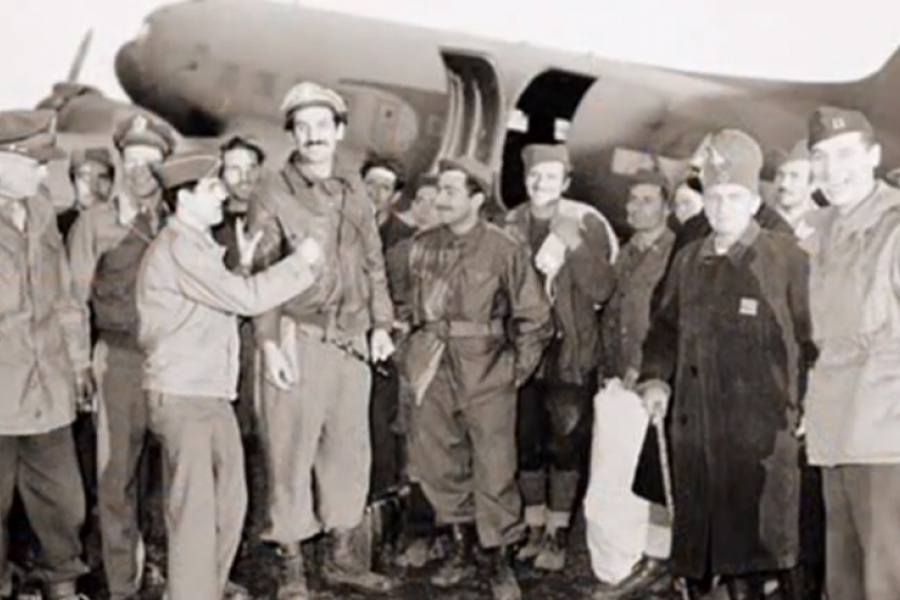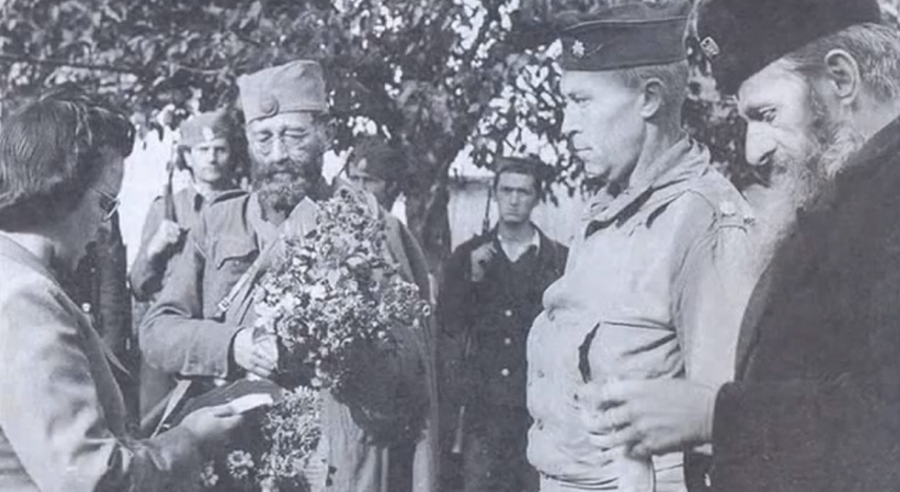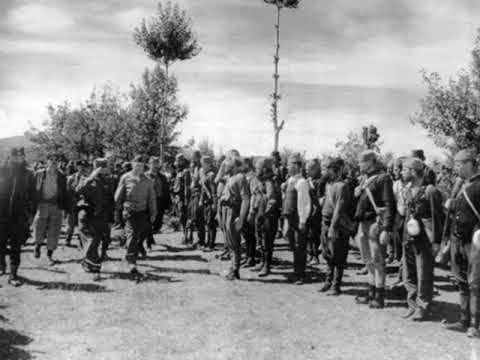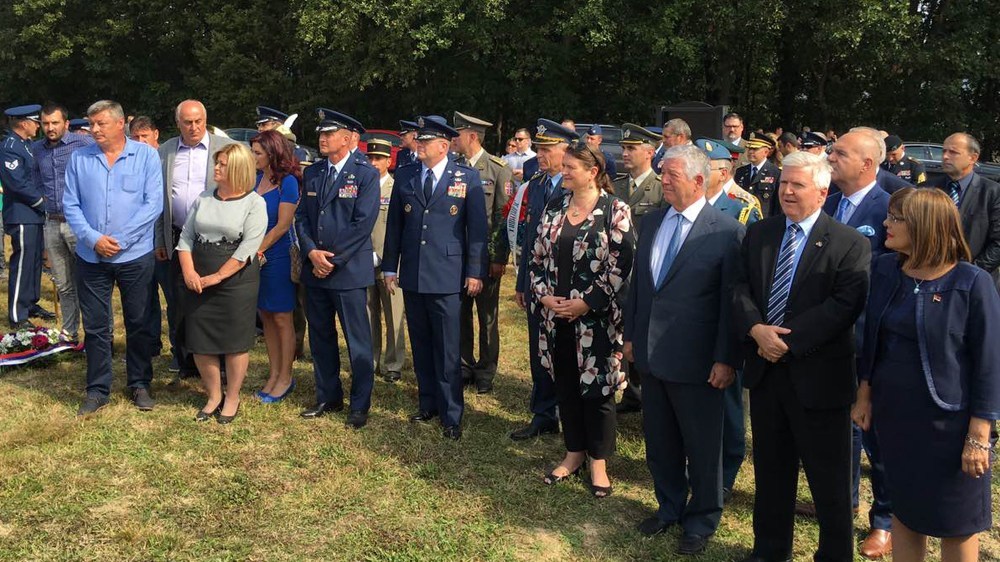Operation “Halyard”: One of the Most Successful Rescue Missions in the History of Warfare Behind the Enemy Lines

By attacking
Poland in 1939. Nazi Germany has started the most destructive war in the
history of mankind. Second World War has found Kingdom Yugoslavia unprepared
and exhausted with internal problems. In such a constellation, under a rising
pressure of Germany after Anschluss and occupation of Poland, Czechoslovakia
and France, which has made alliance with all the neighbors of Yugoslavia, and
Italy has put Albania under its protectorate, Prince Pavle, as a royal viceroy
has signed on March 25, 1941. accession protocol of Yugoslavia to Tripartite
Pact. However, this was not of long duration, already on March 27, a coup was
organized, Prince Pavle was dismissed, and King Peter II proclaimed mature and
general Dusan Simovic was selected as a president of government. This meant for
Germany that Yugoslavia had to be defeated by military means. Soon, already on
6 April, Germany has started military operations by bombing Yugoslavia’s
capital and invading it by land from several directions. So-called “April War”
lasted only for eleven days. Already on 17. April Kingdom of Yugoslavia has
capitulated, and its territory divided among Axis powers.
However,
capitulation did not mean the end of resistance towards occupier. On the whole
territory of Yugoslavia, two anti-fascist movements have been created. First
movement was formed by the members of royal army who have not recognized the
capitulation. Led by colonel Dragoljub Mihailović, soldiers and officers who
managed to escape capture, gathered on Ravna Gora mountain and organized
guerilla resistance movement. Ravna Gora Movement, formally known as the
Yugoslav Army in Homeland, has organized and participated in saving more
than 500 allied pilots from occupied territory of Yugoslavia. Another
resistance movement formed in Yugoslavia was National Liberation Movement under
the leadership of Josip Broz.
At the end of
1943. Allied Forces started with bombarding targets in Romania, Bulgaria and
Yugoslavia. Confronted with strong German air defense, many planes were shot
down and pilots parachuted on the territory of occupied Yugoslavia. Main targets
of bombing were oil fields in Ploieṣti, Romania. From October 1943, until
October 1944 it was performed more than 20 thousand flies over Yugoslavia by
Allied Forces. During the bombing actions, it inevitably happened clash between
with German aviation and air defense, thus an increasing number of aircrafts
were shot down, and crew left deeply behind the enemy lines, mostly under the
territory controlled by the Royal Army.[1]
First pilots were rescued on January 24, 1944. By Toplica Corps of the Yugoslav
Royal Army in Homeland.[2]
A plane has forcedly landed between two groups of Bulgarian armies,
Chetniks (more commonly known members of the Royal Army) carried out an attack
in order to rescue the pilots. All 9 crew members were rescued alive and
healthy.[3]
In upcoming months, during spring, more and more pilots were rescued from the
German occupying forces. Before long, hundreds of rescued pilots by Chetniks of
Draža Mihailović were waiting on evacuation from Yugoslavia. “Order of the
general Mihailović to all units was that airplanes’ crew must be rescued at all
costs, regardless of casualties. Certainly, rescue actions were followed by
clashes with German patrols sent to catch the pilots.”[4]
In hiding the pilots, Serbian villagers provided incommensurate assistance. Immediately
after rescue, pilots were taken care of in the villagers’ houses where they
have taken off their uniforms and changed in local costumes in order to deceive
the trail. They were hiding in houses, but also stables and attics for days and
months, while villagers were sharing their last supplies of food with them. Locals
have greeted the pilots with delight, and also not one case of betrayal was
recorded even though villagers risked their own lives and retaliation of
Germans.[5]
Already in early spring, soldiers of the Royal Army were taking recued pilots
from all over the country to territory under control of First Ravna Gora Corps,
how they could gather all the rescued pilots in one place for a later easier
evacuation.[6]
Soon, it became apparent that a comprehensive evacuation plan of pilots is
needed. Therefore, on June 28, 1944 the planning of the Halyard rescue
mission was started. A rescue team with only one order was send by direct
order of president Roosevelt, to successfully evacuate aviators.[7]
For that purpose, building of improvised airport has started, how allied planes
could land and take off to evacuate the pilots. The chosen location was not far
away from the village Pranjani near Gornji Milanovac. Plateau known as Galovića
field was recognized as suitable location for airport building. This task
was assigned to reserve captain Nikola Verkić, an engineer. The airport was
built in secret, mainly during the night. More than hundred villagers were
digging and levelling the terrain with improvised tools and bullock cart, and
on the rim of the runway bonfires were set on fire in order to light up the
runway for night landings.[8]
During the night on 25. July, after several failed attempts to find Mihailović’s
Chetniks on the ground, first plane flew over the airport, but did not land.
Three parachuters descended from the sky. These were Captain George Musulin, Sergeant
Michael Rajacich, and radio operator Arthur Jibilian, and their assignment was
to execute further preparations and coordinate operation of evacuating the
pilots from Yugoslavia.[9] All three of them spoke Serbian language and
were of Yugoslav descent, which were the main reasons why they were selected to
go in General Mihailović’s headquarters. Among American officers who
coordinated the Operation Halyard was also Major Richard Feldman. He was one of
the pilots who were shot down during the return from Romania. Members of the
Royal Army have founded and saved him from capturing by Nazi Germans. When
Feldman came to Pranjanji he realized that the runway is too short for landing
of the American transport airplane C-47. Hence, the runway must have been
extended in order to meet the minimum length.[10]
First evacuation
airplane was announced through radio connection for July 31, at 10 PM. However,
according to testimony of Feldman who at the moment was in Pranjani, there was
no plane. Only two hours later they heard plane engines in the distance,
however they couldn’t be sure if that’s American rescue plane or German scout
plane. Having that in mind, General
Mihailović have decided not take a risk, and ordered his people not to light up
the torches along the runway.[11]

Officers
Jibilian, Musulin, Feldman and Rajačić who coordinated the action, were
concerned that Germans might found out about the mission. Only 20 km further, German
garrison of 4500 men were stationed in Čačak, and second one was just 8 km from
the spot with 2500 German soldiers. General Mihailović has informed Major
Feldman that 8000 members of the Royal Army are guarding the airport, organized
in two hoops. With barricades on all roads leading to the airport, Chetniks had
the order to defend the airport in the case of German attack at the cost of
their lives.[12]
Major Feldman requested to visit Chetnik’s defense lines how he could be assured
in safeness of more than 200 American pilots present at the moment. General Mihailović
held the muster of his units for the American officers.

Finally,
after several months’ long preparations, officers Feldman and Musulin are
sending coded message to allied air base in Bari that everything is ready for
starting the mission “Halyard”! First six airplanes type C-47 which would
evacuate 70 American pilots would land on August 9, at 10 PM on the airport on Galovića
field. Everything was ready! The mission implied establishment of
air-bridge between Bari and Pranjani with the aim of evacuation of pilots who
were hided by locals.
In 10 PM four
C-47 appeared above Pranjani. Lieutenant Musulin hold in his hand a lamp to signalize
agreed code to the airplane crew by using Morse’s code. They received answer
from the airplane which was appropriate. Musulin and Feldman relieved, they we afraid
of German planes. Torchers alongside the runway were lighted how they could
make night landing possible. In that moment, only two airplanes landed, the
other two went back due to the engine malfunction, and not all 70 pilots were
able to be rescued that night. Feldman promised to 24 pilots that couldn’t be
rescued in the first wave that they will be evacuated next morning and has sent
his report to the headquarters in Bari. Next morning, a deafening sound at 7 AM
could be heard by a group of planes that were arriving to Pranjani. It was a
sound of 6 C-47 accompanied by 25 fighter planes type P-51. Planes were
landing in intervals of 5 minutes, boarding pilots and flying back to Bari. In
interval of 2 hours it was evacuated 241 American, 6 Britts, 4 Frenchmen, 9
Italians, 7 Yugoslavians, and 12 Russians. During the night of August 9, and morning
of August 10 it was evacuated 289 allied men in total. Air-bridge was successfully
established behind the back of Germans who haven’t noticed anything. In next days and weeks Chetnik units continued
to gather in Pranjani allied soldiers and officers who were rescued, how they
could be safely evacuated from there. At the end of August, on 26 and 27 of
August, additionally 58 Americans and 2 British officers were evacuated from
Pranjani together with Lieutenant Musulin. Total number of soldiers and crew
rescued during the Halyard operation is 432 Americans and 80 members of allied
forces crew.[13]
More than 500 allies were saved and rescued from the airport in Pranjani.
Afterwards Chetniks retreat from Pranjani and make two more improvised airports
for evacuations. The first was built in mid-September near Koceljeva in Mačva region,
from were around 20 American pilots were evacuated, few Italians and Frenchmen
as well as two American medical officers.[14]
Afterwards, the Command of Yugoslav Royal Army in the Homeland was moved in
Eastern Bosnia in Boljanić village near Doboj, where second improvised airport
was built. During November and December 1944. from there the last American
pilots and officers were evacuated from Yugoslavia. Among them were: chief
of the last American mission at Yugoslav Royal Army – Robert McDowell, Captain
Nick Lalich, who was coordinating rescue operation after evacuation of Musulin,
and communications officer, Arthur Jibilian. They were the last Americans to
be in contact with General Mihailović. After their evacuation General
Mihailović was abandoned by Allies and every contact with him was lost.
“General
Donovan in the report to president Roosevelt in October 1944. states that from
the territory of Yugoslavia was saved 1088 pilots. Therefrom, Chetniks
have saved 561, and Partisans 527 downed aviators.”[15]
This information speaks in favor of both resilience movements in Yugoslavia
and their support for the Allies and contribution in fighting against the
Fascism and Nazism in Europe. Yugoslavia has, by missions like this, proved its
friendship towards the USA and lay the foundations for future cooperation.
Saving of
American aviators was one of main reasons for posthumous decoration which
General and Ministry of War of Kingdom of Yugoslavia – Dragoljub Mihailović received
from the American President Harry Truman in 1948. Legion of Merit is the
highest decoration that the US president may award to the foreign citizen, and
that was the way of gratitude of US for the General Mihailović for his
sincere fight on the side of Allies. In gratitude for his bravery and recognition
of his role in saving American pilots in 1985 American Congress has approved
erection of monument to Dragoljub Mihailović in Washington, capital of the US.[16]

Republic of
Serbia and US Embassy organize laying wreaths on 7 memorial plaques erected in
honor of the Halyard mission every year in Pranjani. Actions like this stay
remembered as evidence of eternal friendship of Serbian and American people.
This text was
originally published in Serbian on a specialized web-portal “Our Story – Serbo-American
Relations Through Centuries”: www.nasa-prica.rs
[1] Немања
Девић, Ваздушни мост – Операција Халијард, https://www.vidovdan.org/2017/11/28/nemanja-devic-vazdusni-most-operacija-halijard/ (retrieved: 28.02.2019. )
[2] Мирослав
Самарџић, Дража и општа историја четничког покрета – дванаести том, УНА ПРЕС,
Београд, 2008, p. 7.
[3] Ibid, p. 7.
[4] Ђорђе
Ристић, Спасавање савезничких пилота од стране Југословенске војске у отаџбини
у Другом светском рату, University
of Belgrade, Faculty of Political Sciences, Master’s Thesis, Belgrade, 2018, p.
21.
[5] Немања
Девић, Ваздушни мост – Операција Халијард, https://www.vidovdan.org/2017/11/28/nemanja-devic-vazdusni-most-operacija-halijard/ (retrieved: 28.02.2019. )
[6] Ibid, p. 9.
[7] Бојан
Димитријевић, Коста Николић, Ђенерал Михаиловић – биографија, Институт за
савремену историју, Београд, 2004, p. 425
[8] Звонимир
Вучковић, Од отпора – до грађанског рата, друга књига СЕЋАЊА ИЗ РАТА, Издавачко
предузеће ''Чича'' , Београд, 1990, pp. 108-109
[9] Lt.
Com. Richard M. Kelly, USNR, The Halyard Mission, The Story of the Greatest
Rescue of American Lives from Behind Enemy Lines in the History of Warfare,
Blue Book Magazine, Vol 83, No. 4, August 1946, p. 3
[10] Lt.
Com. Richard M. Kelly, USNR, The Halyard Mission, The Story of the Greatest
Rescue of American Lives from Behind Enemy Lines in the History of Warfare,
Blue Book Magazine, Vol 83, No. 4, August 1946, pp. 55-62
[11] Lt.
Com. Richard M. Kelly, USNR, The Halyard Mission, The Story of the Greatest
Rescue of American Lives from Behind Enemy Lines in the History of Warfare,
Blue Book Magazine, Vol 83, No. 4, August 1946 pp. 52-62
[12] Ibid, pp. 58-59
[13] Ibid, pp. 60-62
[14] Звонимир
Вучковић, Од отпора – до грађанског рата, друга књига СЕЋАЊА ИЗ РАТА, Издавачко
предузеће ''Чича'' , Београд, 1990, pp. 158-163
[15] Ђорђе
Ристић, Спасавање савезничких пилота од стране Југословенске војске у отаџбини
у Другом светском рату, Универзитет у Београду, Факултет политичких наука,
Мастер рад, Београд, 2018, p. 28
[16] 99th
Congress, 1st Session, H. R. 77, A Bill to authorize the National Committee of
American Airmen Rescued by General Draza Mihailovich in Washington, District of
Columbia, In the House of Representatives, January 3, 1985